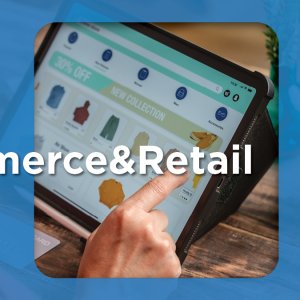How to Offer Free, Fast Delivery Without Breaking the Bank

STORY INLINE POST
Latin America has matured into the fastest-growing e-commerce market in the world, with an average 30 percent increase in online transactions per year. But this newly found appetite comes with evolving expectations. An AMVO survey in January 2022 found that 56 percent of Mexican consumers consider free, fast, and reliable shipping as the most important features of e-commerce.
With highly trusted brands like Mercado Libre and Amazon Prime taking up more and more space with their unparalleled delivery options, free next-day delivery is becoming the major trend in Mexican online commerce. With this new normal, brands are under pressure to keep up with customers who expect their products to arrive at their doorstep on time.
These ultra-fast deliveries are expensive for businesses as they lean on optimal logistics operations. On the one hand, well-designed logistics require fulfillment, trucks, staff, and inventory investments. On the other hand, customers resent paying more for their delivery preferences. So, the question becomes: How can companies boost their logistics and shipping without breaking the bank?
Don’t Skimp on Fulfillment Intelligence
Nowadays, small to midsize companies may have one or two warehouses in the country or city they primarily serve. The larger their products, and thereby warehousing needs, the more likely companies will buy warehouse space in the cheaper areas of town. Unfortunately, those are also often farther away from customers since they are usually located in industrial areas.
For this reason, many companies prefer to outsource their delivery logistics to third parties, such as FedEx or DHL, so companies obtain quotes for each package or manage a predetermined volume of orders each month. However, these companies calculate the shipping costs by distance, size and weight of parcels, and logistical expenditures – so enhancing logistics is a must for businesses either way.
To solve the issue of expensive shipping, I advise companies to distribute their products across several fulfillment centers in crucial business areas. Ask questions like: Where are your customers located and where is the nearest and most cost-effective possibility of storing your products? You will gain better insights into the distances your products travel and moving them closer to their final destination will decrease expenses. For example, you can keep some of your inventory in a Mexico City warehouse, have a location in Guadalajara for the north and one in Merida for the south, and so on. The good news is that you can choose between renting warehouse space or using a third-party fulfillment network.
Consider Alternative Logistics Channels
In the traditional sense, delivery means taking your goods from your warehouse to the customer's doorstep. New delivery methods like click-and-collect offer a cheaper and faster alternative to door-to-door delivery. It bypasses the last-mile logistical challenge that plagues delivery services by outsourcing it to the customer itself.
Levi Strauss, for example, has a curbside pickup system in about 80 percent of its 200 stores in the US – and statistics show that most of its customers prefer to pick up their goods than have them delivered on a slower schedule.
As with all logistics solutions, be aware that click-and-collect requires you to optimize your inventory and warehouse management because fast, curbside delivery depends on having products in stock and ready for a picker to grab. Nevertheless, if you save some pesos on the last mile, you can allocate those funds to enhance your inventory and fulfillment process.
Find Ways to Cover the Costs of Speedy Delivery
The ability to ship packages quickly across the city costs your business money – and not exactly a small sum. Whether you can afford to offer free delivery, premium delivery subscriptions, or introduce minimum basket sizes, you need to prepare the most important data to know which option will work to your advantage. If you don't have an analytical overview yet, we advise you to proceed step by step and test different delivery models. Over time, you will accumulate enough data to see which delivery method your customer base prefers and what pricing you can afford as a store.
However, even if most people are expecting fast delivery options, the average shipping price tolerance remains very low or zero. Your ultimate goal as a store must be cutting costs without affecting customer experience. Another way to reduce shipping costs is by putting your logistics in the right hands. Third-party delivery providers use data analytics, high-proximity networks, and technology to significantly reduce the costs of fast delivery, while keeping customers happy.
Focus on Logistics Technology
One alternative to in-house logistics or third-party vendor platforms is to partner with a technology provider that can handle all your fulfillment and warehouse processes. Often, they not only provide powerful analytics and algorithms to optimize targets but also have warehouses, distribution centers, delivery vehicles, and other necessary logistics to reduce friction and enable faster delivery. The best supply chain software solutions should vertically integrate not only with your distribution channels but also with the fulfillment centers you use. Once the order is shipped, the tracking information should automatically sync with your store, where it can be communicated to your customer.
Finally, optimizing your logistics channels depends on the size of your business, your order frequency, and the type of products you’re selling. Suppose intimate customer relationships are at the core of your business. In that case, you should look for a trusted service provider that takes the time to analyze your business and customer needs before implementing any solutions. On the other hand, if managing a large number of orders daily is your biggest challenge, outsourcing to a logistics company or third-party fulfillment center with a wide range of digital and practical solutions will be your best bet.
Whatever decision you make, remember: The key to keeping costs low is using modern technology, putting business analytics at the heart of decision-making, and focusing on customer-centric solutions.























